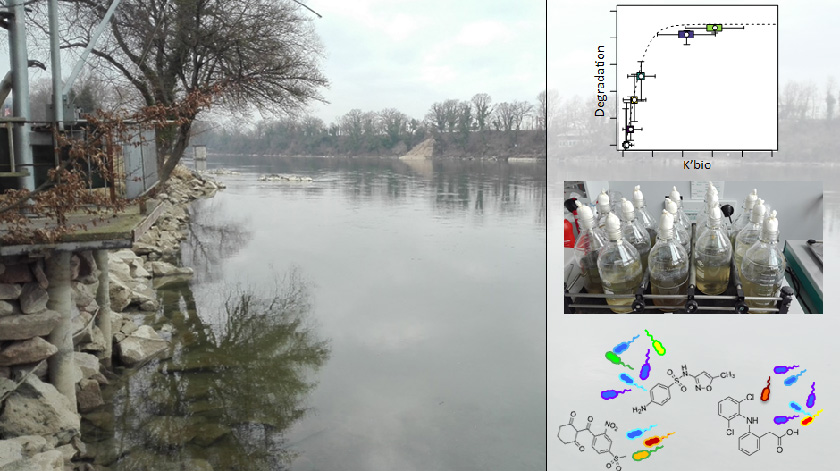Department Environmental Chemistry
PIdent2

Right picture part: The pics from the laboratory were taken in eawag Aquatikum on 28.06.2018
Chemichal structures: https://de.wikipedia.org/wiki/Diclofenac, https://de.wikipedia.org/wiki/Mesotrion, https://de.wikipedia.org/wiki/Sulfamethoxazol
In regulatory hazard and risk assessment chemical persistence is assessed through a tiered system of degradation studies. However, especially in the more complex, so-called simulation tests, such as the OECD 308 and 309 tests at the water-sediment interface, interpretation of the experimental data remains a challenge and the transferability of the results of such laboratory studies to actual environmental situations is unclear.
In the project PIdent2, funded by the German Environment Agency (UBA), we aim to improve the interpretability of OECD 308 and 309 data. First, we carry out parallel OECD 308 and 309 experiments for the same sediments and with a mixture of up to 50 pollutants. We then jointly evaluate these data through inverse modeling of the test systems to derive a biomass- and bioavailability-normalized biotransformation rate constant, kbio’, that is only dependent on the chemical and the biotransformation capacity of the biomass, but less on the experimental setup. Second, we use data from existing and own field studies in river systems (e.g., from a recent monitoring campaign in the Rhine catchment) and a hydrological and chemical fate model of the Rhine catchment to inversely estimate biotransformation rate constants observed in the field. Finally, comparison of results from laboratory and field studies, both in terms of absolute but also relative values of biotransformation rate constants, will inform on the usefulness of laboratory biotransformation data to predict chemical persistence in river systems.
